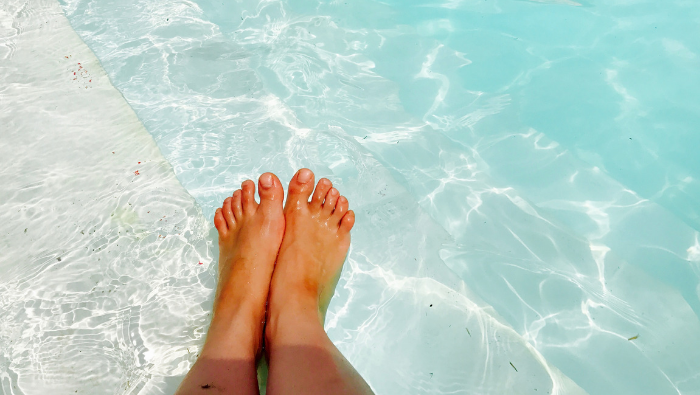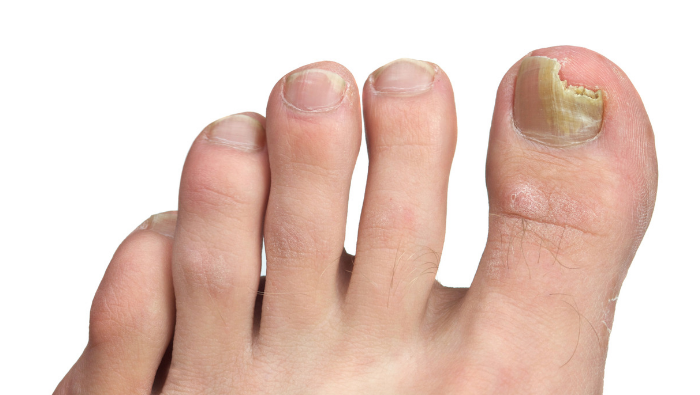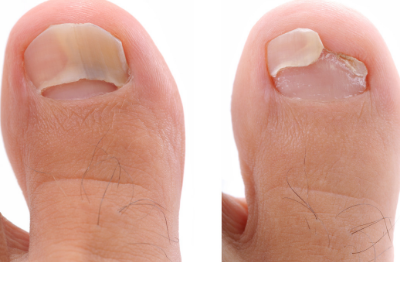Last week felt like spring had sprung!
I saw many people grabbing the shorts and sandals from the cupboard. Although there is nothing worse than getting those sandals out and finding your feet are in an awful state and need serious TLC!
So what can we do? Follow our guide to getting your summer ready!
Fungal toenails
Thickened toenails aren’t always a sign of fungal nails but it is best to see a Podiatrist for a diagnosis before embarking on any treatment. They can test the nail and design a treatment plan for you. It’s worth noting any fungal nail treatment can take a minimum of 6 months to work, so it is a better idea to start treating the problem during the winter months to get your nails and feet ready for summer! Your podiatrist can use an electric file to smooth them and reduce the thickness of the nail, making them look a lot better when you paint them!
Missing or damaged toenails
It can be very infuriating if you have a nail that will not grow properly or keeps breaking as it grows up. Your podiatrist may be able to offer a nail reconstruction service. A flexible gel is used to build up the nail. The beauty of the product is you can paint it with normal nail varnish afterwards and it can last several months and gets your feet looking ready for summer!
Weak or damaged nail surface
Long term nail varnish or gel/acrylic use can damage and weaken the surface of the nail. This can lead to infection and poor nail growth. Try using a nail hydration treatment and avoid nail varnish for a few months. During the summer months try and leave a break between nail varnish and try and avoid it all together in winter months to allow time for your nails to breathe. Always use a base coat and use nail varnish remover to remove.
Cracked heels
During the warmer weather, we are more prone to cracked heels. These can be caused by wearing open- backed shoes and the foot rubbing around the edge of the shoe. The fatty pad of your heel also expands sideways in an open-backed shoe which, if the skin is dry, can lead to splitting or cracks within the heels.
To prevent this apply a moisturiser such as Flexitol twice a day and use an diamondeb foot file once a week, when the skin is dry to reduce the amount of hard skin building up. If the problem persists you may need to visit a podiatrist who can remove the hard skin and any painful splits and prevent them from getting worse. The filing/creaming treatment plan is then much easier to manage the problem. Done once a week it can get your feet ready for summer and control the problem for good!
Sweaty feet
As the temperature rises we hear from a lot of patients about smelly feet! It’s no surprise as there are more sweat glands per square inch of our feet than anywhere else on our body! So what can you do to stop it?
- Wash your feet daily or twice a daily and clean and dry well in between the toes.
- Change your socks daily and more frequently if they are wet from perspiration
- Try and wear socks made from man made fibres such as cotton, avoiding nylon or bare feet
- Use a de-odorising spray
Blisters
Another common complaint we see in the summer is blistering usually caused by rubbing. This is the body’s way of dealing with rubbing or irritation and help protects the area to further damage. We recommend following the steps below to prevent blisters:
- Ensure footwear fits correctly to avoid excess friction
- Keep feet dry at all times, blisters are more likely when feet sweaty
- Rest your feet – overworked feet will swell and sweat more increasing chance of blisters
- Wear the right shoe for the job!
- Wear socks with shoes.
West Berkshire Foot Clinic’s moto is “Prevention is better than cure!” So make sure you start looking after your feet now to prevent a mad panic when summer arrives!
Enjoy the summer and keep those feet happy!




